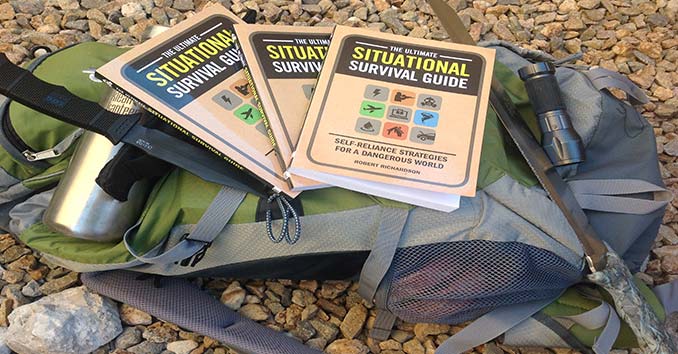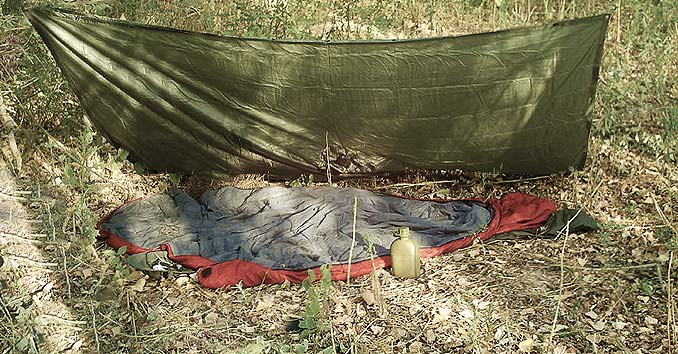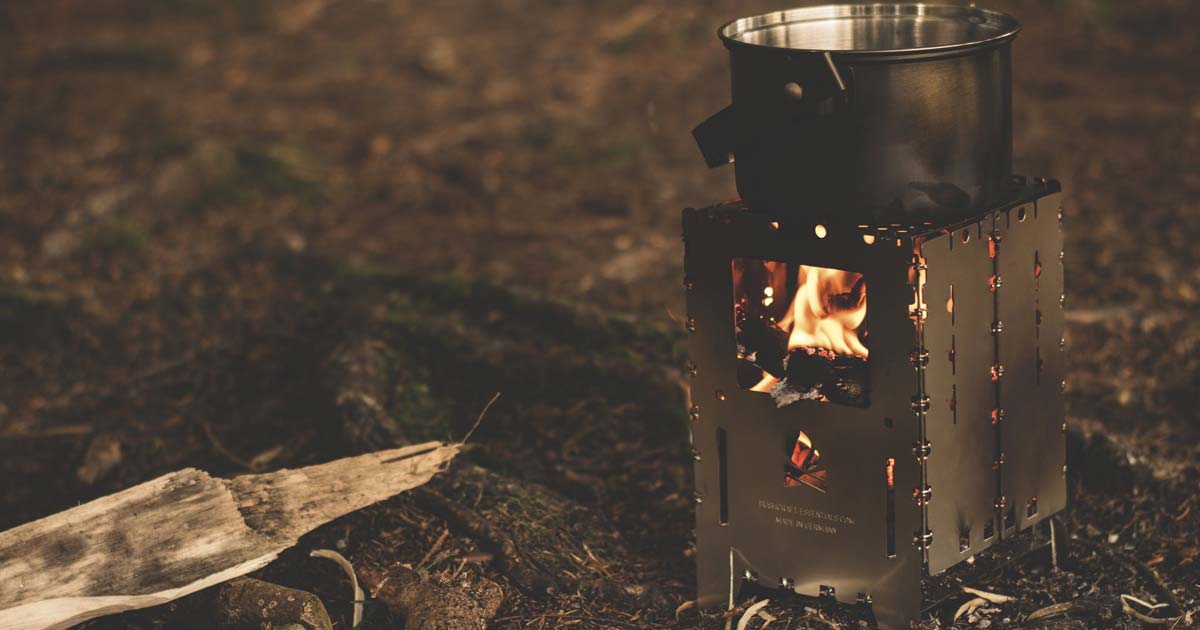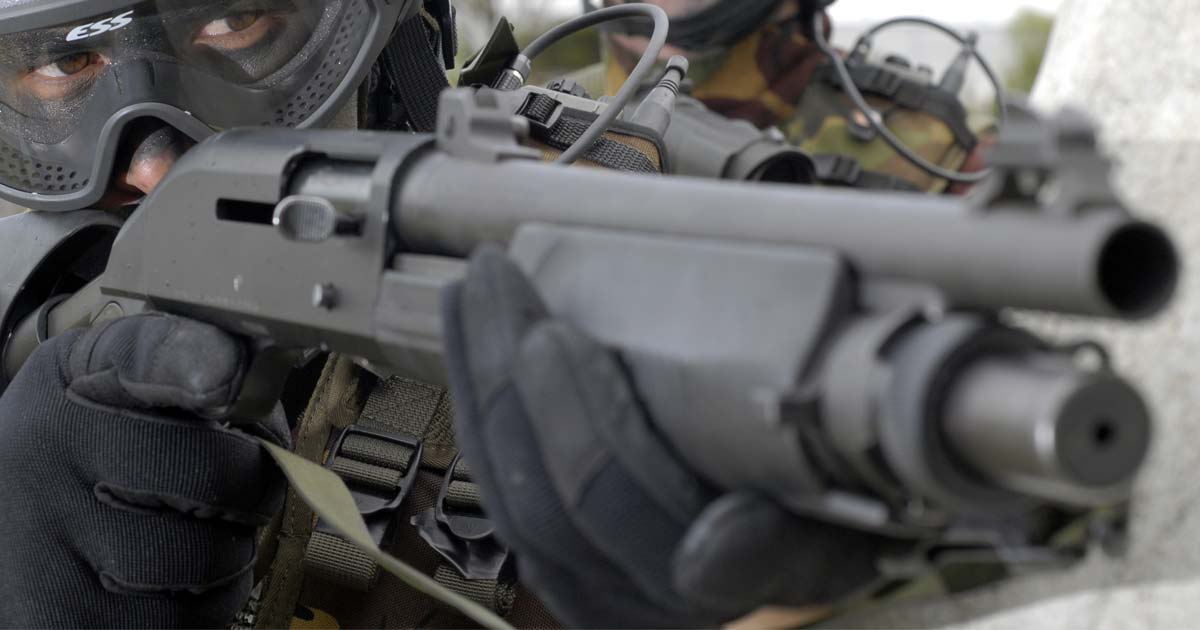
What is Bug Out Bag?
A Bug Out Bag is an emergency survival bag filled with the essential survival gear that you would need to survive during a short-term or long-term disaster or crisis. It’s meant to be grabbed at a moment’s notice and should always be kept somewhere where you can quickly access it during an evacuation.
Most people who have a basic understanding of survival and preparedness understand the need for a good Bug Out Bag. It’s probably one of the most talked about items on survival websites and is something that has become a bit of an iconic symbol for preppers and survivalists.
If you haven’t heard of the term Bug Out Bag, you may have heard someone refer to it as a Go Bag, 72 Hour Bag, Get Home Bag, Get out of Dodge bag, or some other variation of the name.
What you call it isn’t important; the basic idea behind a Bug Out Bag (BOB) is pretty simple. At its most basic, a BOB is a pre-packed bag filled with the essential gear and supplies you need to survive during an emergency situation. It’s something that you can grab quickly, should a disaster or emergency situation occur that would require you to leave your location.
What type of gear should you pack in your Bug Out Bag?
There is no One-Size-Fits-All Bug Out Bag solution. When it comes to packing your bag, a number of things need to be considered; first and foremost, should be planning.
Starting with a good plan is the only way to get started. To select the best gear for your bag, you need to consider the following couple of things:
- What are the most likely disaster situations you will face? Part of actually being prepared for anything means knowing exactly what situations you’re preparing for. Before ever buying a single piece of gear for your bag, you need to first figure out what disasters you’re preparing for. This will give you a good idea of what you need to pack, how long you need to pack for, and how much gear you will need to survive.
- What Threats might you face? Understanding what threats you will face in an emergency situation is a crucial part of the Bug Out Planning Phase. Performing a threat assessment will help you figure out which items you need to pack, and which items you can do without. I highly advise reading our article on Pre-Trip Planning for Backpackers; it’s filled with information that directly relates to planning for a Bug Out Situation.
- What are your Strengths & Weaknesses? One of the things I often recommend for anyone serious about preparedness is to perform a SWOT Analysis. A SWOT Analysis is a simple but effective method of really understanding your Strengths and Weaknesses. By honestly accessing your situation, you will not only get a good idea of what areas you need to train in, but you’ll also get a good idea of what gear will complement your strengths.
Once you’ve thought about the above considerations, you can then start to pack your bag. While there is no one-size-fits-all solution, we do have a list of some gear that you may want to consider along with a list of some common Bug Out Bag Gear.
Considerations to think about before packing your BOB:
- Make sure you pick the right Survival Backpack: Every situation is different, from tactical bags and hunting packs to covert bags, you need to think about which type if right for your situation.
- Who will be traveling with you? Do they have any special needs or medical conditions that need to be addressed ahead of time? Do they have their own bag filled with gear, and will their equipment complement your gear?
- Do you have a BOB for your kids? During a SHTF situation, it’s important for your kids to feel as safe and secure as possible. Having a custom Bug Out Bag filled with familiar items and comfort foods can help defuse a stressful situation, and give your child a sense of control. With younger children, comfort items are a top priority that will help ensure their mental health during a stressful emergency situation.
- Are you actually prepared to Bug Out? It may sound like a silly question, but I don’t think most people realize what it’s really going to take to survive in a real-life bug out situation. It’s one thing to talk about bugging out; it’s another thing to carry your gear 10-15 miles a day in dangerous and unforgiving conditions.
- Do you need more than one bag? Since we have no way to know exactly when and where a disaster will hit, you might want to consider having a bag at home, at your office, and in your vehicle.
- Don’t forget your EDC. Let’s face it; carrying 30 pounds of gear at all times is pretty impractical. Yes, you can have multiple bags stashed at your home, office and even in your vehicle, but no matter how much you prepare there are going to be times when you may not have access to your BOB. That’s why I suggest always having and carrying an EDC Kit.
- Do you have an evacuation plan? Having an emergency evacuation plan is one of the most important steps in preparing a Bug Out Bag. Having a BOB is great, but if you don’t have an evacuation plan and a place to go, what’s the point of having a bag?
THE BIG 4 – Water, Shelter, Food, Protection
Water, food, shelter and protection are the most important things that you can focus on. They are the fundamental building blocks to any good survival bag, and should be the foundation that the rest of your gear is built upon.
Water Supplies

While some of the items on this list may be considered optional, this is one survival category that’s definitely a necessity. Simply put, without water you are as good as dead!
Hydration Considerations:
- Gallon of Water per Day: While your exact needs will depend on a number of factors, including your environment, activity level, and overall health, a good rule of thumb is to carry a gallon of water per day per person.
- Water Bottles: Having a way to carry and store water is essential to your survival. I recommend the Klean Kanteen for its ability to carry and boil water right in the bottle.
- Water Filter: In my opinion, a water filter is another essential piece of gear. It helps you cut down on your overall water weight, and gives you the ability to purify even the most disgusting sources of water. There are a number of quality water filters on the market, but so far there’s only one that I trust enough to carry in my bags. I recommend checking out our Katadyn Pocket Water Microfilter Review.

Bug Out Bag Shelter Gear
Your ability to regulate your internal body temperature, and protect yourself from the elements, is going to be important during any type of survival situation. A shelter is one of those survival necessities that can literally mean the difference between life and death.
The type of shelter you choose will depend on your situation, your environment, and your overall ability to build a shelter from local materials.
Shelter Considerations:
- Clothing: Although some people might not consider clothing to be a form of shelter, I believe it’s one of the most important items in this category. In a survival situation, the clothes on your back, combined with what’s in your bag, will be your primary source of shelter and protection. Clothing is your first line of defense against the elements and is something that should never be overlooked.
- Portable Shelters: Some of the most common items include a small tent, a lightweight tarp, sleeping bags, a Bivy Bag, and even plastic sheeting.
- Insulation: In a survival situation, knowing how to properly insulate yourself and your shelter can mean the difference between life and death.

Packing Survival Foods
While food probably won’t become a top priority during a short-term emergency situation, it is something that needs to be considered.
When it comes to choosing the right types of survival foods, keep in mind that your caloric needs are going to be much higher than they are today. When determining what types of food to carry in your bag, consider the energy you will receive from those foods versus the weight that you will be carrying. Pick High-calorie, high-protein foods that will help provide energy while at the same time cut the overall weight of your pack.
Energy bars, trail mix, nuts, and seeds are all things that take up little room in your pack, but deliver an enormous amount of calories, protein, essential fats, and energy producing nutrients.
Check out my article on Backpacking food; most of the items you would take on a backpacking trip will hold up great in a bug out bag. Remember this in not your long-term food supply; the food in your go bag is meant to sustain you during an evacuation.

Adding Protection to your bag
One important, but often overlooked category is protection. No not that kind of protection, get your mind out of the gutter. The kind of protection I’m talking about is firearms and knives.
- Best Fixed-Blade Survival Knives
- The Pros & Cons of Gun Ownership
- Best Takedown Rifles for Survival
- Prepper Guns: Your weapon of choice when the SHTF
The great thing about this category is the items really serve dual purposes. From hunting and protecting yourself from wild animals to protecting yourself from criminals and anything that wants to do you harm, protection is one of the top 4 things you need to consider carrying.
The Key to Building the Perfect Bug Out Bag is Testing
You can have the best gear that money can buy, but if you fail to train with that equipment you might as well call it quits before you ever begin.
I don’t mean to be harsh, actually, yes I do. Your Life Depends on it!
The key to survival is knowledge, testing, and training. Please take the time and learn how to use your equipment in a real world setting. Reading about it is one thing, really knowing how to use it during a crisis can only be achieved through experience and rigorous training.




Im thinking we all need to be ready for what ever come our way no matter what it is. lets all be as prepared as we can. We can do for ourselves when it happens.
EXCELLENT point about looking at what disaster situations you are likely to face. Tailoring a BOB will give you a far higher survival probability than buying an off-the-shelf one or using a generic list. Not enough people consider this factor. Thanks.
Just thought I would add that your BOB should have duplicates or copies of important papers, as a Disaster Relief worker I can’t tell you how many times assistance has been delayed because people don’t have ID, parents don’t know their childrens SS #’s, or we can’t get replacement meds because don’t know their medicines dosages or proper names they just have 7 days worth in a pill organizer. When you get your perscriptions filled add the printout they give you to your BOB along with color photo copies of your ID’s and any policy #’s you may need in a waterproof bag (ziploc freezer)
Also if the address on you ID isn’t current, you need to have proof of residency, (a utility bill or mail from a gov’t enity is best) or you may find yourself unable to gain access to your home or even your neighborhood in the event of a natural disaster due to security issues.
After numerous efforts of packing, unpacking, repacking, trying to find something and replacing it, etc., etc., in my BOB and other bags, I have come up with a fairly decent approach for what to do with the stuff that’s in those bags. Vacuum seal the stuff. I have a FoodSaver vacuum sealer that I use for not only “normal” uses, but I use it to seal sensitive things in my packs. Such as:
Toilet paper. Remove the core and vacuum and seal it. It will end up being about 25% of the original size. Hint: Make the bag (using the roll type material) about 3 inches longer than needed. When you have to open the bag use a sliding bar from a report cover to reseal the bag.
Money. Seal $100 in various denominations in a bag. Take out only one bag at a time. This way you have dry cash and “other people” won’t see all you have.
Clothing. Sox, underwear, and a t-shirt end up under 1/2 inch thick.
Food. Make appropriate size bags for coffee, vacuum and seal. Look for “dry” soups at the grocery store. Cut a bag to the appropriate size, vent the original soup bag (cut a slot in the bag) to get the air out if it, and vacuum/seal it. Write the directions for the soup on the bag with a sharpie. You now have soup in a bag and just extended the shelf-life of that soup.
Papers. Make a bag that all your papers, or copies, will fit, vacuum and seal. They are now protected from moisture and abrasion.
Batteries. Batteries left loose or in a non-vacuum sealed container will eventually leak. Personally, I seal 2 or 3 batteries in each sealed bag. This is to preclude opening the bag and dropping all the batteries. This is not good at night.
Things I want to protect the BOB contents from I vacuum seal. Things like Super glue or other small containerized liquids. And moisture sensitive things like aspirin. I bag and seal the whole container.
There’s probably more in my bag, but this is the idea.
hawkeyes
I can’t find it anywhere, and I’ve seen it asked, but what brand of bags are those in the main pic for all the bug out bag articles?
I have read many articles on BOB,GODB and others with good advice. The one thing not mentioned an these articles are weight considerations. Knives firearms and ammunition can be a considerable amount; leaving little room for other items. A gallon of water weighs 8 pounds. How/what is the best way to figure he weight limits of a given individual? How much ammo is too much/too little?
My BOB is filled with 9 cans of vienna sausage,a lifestraw
5 water bottles,toilet paper,handcranked radio,handcranked flashlight
Flashlight,regular flashlight,a pack of aa and aaa batterys,emergency
Poncho, emergency blanket, led signal lights,latern,and firestartet,first aid kit.
Knife. Im 13 year old prepper and very new to prepping. Any advice
My edc is flashlight,phone,handsanitizer
It might be a good idea to add a para-cord bracelet, and definitely a whistle and small compass. Also behoove you to look into primitive fire starting, since I don’t know if you can legally get lighters. Do not try to start fires, ask your parents to supervise and help, it’s extremely dangerous. Again, do not try it by yourself, but you should know how for emergencies, my father taught me when I was young.
One thing i picked up in the British army on a certain course which might help is very light to carry is knowledge.learn many things which will be useful and practice outdoor skills beforehand.all equipment should be tried and tested before things go tits up.
A windbreaker jacket. My umbrella in white with flashlight folds down, for winds up to 30mph, for rain or as sun block. Sleeping bag. Spoon, fork.,can openers bottle openers solid stainless steel, sweater and gloves even in Summer cause the weather can change in a heartbeat, also always have a scull cap, extra socks of various degrees of warmth wool or alpaca and cotton, Neosporin to prevent infection, metal cup, metal water holder, Stanley Thermos in the car. Keep pillows and blankets in the car if you get stuck and have to sleep in the car also to cover items from others who might steal from you. Keep some bottled water in glass not plastic in the car at all times. Secure in the event you stop short or get in an accident. Keep some dried or freez dried package food handy in the car and some supplies in the trunk with extra freeze dried and vacuum sealed food, especially freeze dried fruit. I Would keep a paper address book with written directions to places you may want to go. An excellent compus that you know how to use. A sky chart to help you to find your way so you don’t get lost. Some red ribbons to tie to branches so you can find your way back in the forest, or if you are lost someone can find you. A small hatchet to cut into tree for same purpose, for clearing the way, and for collecting twigs for a fire. Magnesium fire starter. Bottle of multiVitamins. Prescription drugs. Over-the-counter and prescription pain pills. Full written description of medical history and name and location of Physician, Dentist, and Eye care specialist if you wear prescription glasses
I Would like to echo Mark Manning’s suggestions and add that for anyone who has never been on government assistance, the process of applying is extremely stressful, you’re house has burned to the ground, your neighborhood in shambles, what supplies you depended on used, money stolen, loved ones dead, gone, unable to help. On top of everything you are sick and injured. You and your children are starving in spite of all your preparations you need help. When you see the twenty page application for assistance with it’s full page of documents required you’ll wish you had prepared before getting in line for six hours. Go before the emergency. Get the forms now while you can fill them out in your leisure and you’ll have a checklist for all the documents you need to have in your Bug Out Bag. I suggest getting all utility bills paid a month or two in advance, paying off your mortgage as soon as possible, save for future home taxes, paying off all your creditors, having and establishing good credit. Getting your credit score as high as you can so that in a REAL emergency you can get a loan, whether for cash or to replace a house that has been destroyed; or simply to help in getting a new job as employers think your credit score is your “content of character” score. The Higher Your Credit Score – the Better Your Character. Also in your Bug Out Bag I suggest you take a current resume and that you start collecting character references with complete letters of recommendation and get a passport if you don’t have one or yours expired. Also get familiar with air travel. If you can, learn to fly an airplane. At least practice getting to the airport. Be prepared. Talk with a travel agent. Find out what your options are and what they cost. Start saving for a long vacation, think about where you might want to visit before you are forced to do it by circumstances.
Just underscoring the importance of having all documents copied and in the BOB. We had a devastating flood here 3 years ago, and applying for assistance was a nightmare for everyone who was unprepared, which was pretty much everyone. We were lucky, but many had minutes in which to evacuate and lost their homes. All roads were washed out, so we were completely cut off until helicopter evac 3 days later. You’d be surprised ( or maybe not) how many people didn’t even have enough medication or even 3 days worth of food and water in the house. No one saw the whole thing coming- it really can happen.
Most of my gear is stuff I’ve carried for years as I worked my way through 23 years in the army. Most of my time was in the 82d ABN DIV.I used the same things time and time again.He’ll every once in awhile I’ll go outside and brake out the flint and steel and char cloth and start a fire just to be in practice. Remember WHAT YOU DO IN TRAINING IS WHAT YOU DO BATTLE. Your battle may be building a fire when you’re wet and cold.
Cool article about bugging out! I was waiting for the last part of it; practicing! People will be prepared to the bone but never ever practice. They will be confused when the shft.
Pheww!! Been reading this for almost two weeks now. I hope this Dragon that woke up wont collapse. Either way, thanks a lot to all. Just one opinion, Decathlon have quite a lot of these BOB items. I have been on and off with these prepper mode ever since a child. Quite fun but now time to practice it all on stress and pressure mode.
Moonair.
“Bug-Out” whatevers are so 2019. We’ve got “Plan B” boxes packed with our coamping and evacuate supplies and an “O’shit” bag in the vehicles. : )
I have a slighty dirty well used day pack on the floor of the backseat of my PU. I have a cold old weather jacket under the seat. I have a few tarps and tent stakes on the floor too. I have an old walmart plastic bag with various pieces of cordage. I have a lot of the various GHB items strewn on the floor as well. And to make it look good I have various fast food wrappers, empty cups and a scrunched up fast food bag or two on the floor as well. If you were to look into my backseat the idea of going through that trash would be a turn off. I call it my urban camouflage. Yes I have to collect all the bits and pieces and load the bag to walk away from the truck but the general undesirableness of the mess is what keeps someone from taking it so I consider that tradeoff worth it. I also have some better items hidden in there but a determined thief could find them. But generally a thief is looking for something useful and valuable that can be sold and my junky floor just doesn’t offer that.